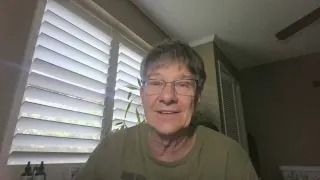By Didier Malagies
•
02 May, 2024
The Federal Reserve ’s Federal Open Markets Committee (FOMC) maintained its short-term policy interest rate steady at a range of 5.25% to 5.5% for a sixth consecutive meeting on Wednesday. “The Committee does not expect it will be appropriate to reduce the target range until it has gained greater confidence that inflation is moving sustainably toward 2%,“ the FOMC said in a statement. “In addition, the Committee will continue reducing its holdings of Treasury securities and agency debt and agency mortgage‑backed securities.“ During their last meeting in March , policymakers indicated that they still envisioned three interest rate cuts in 2024. But with inflation remaining sticky and unemployment staying below 4%, these expectations are becoming less likely. Recent economic data hasn’t given the Fed confidence that inflation will continue to decline. Strong inflation data in the first quarter, coupled with a robust labor market , have postponed expectations for the first Fed rate cut. In April, Fed Chairman Jerome Powell, speaking at the Washington Forum , made it clear that rate cuts were not imminent due to the strength of the economy. The economy has maintained surprising momentum despite the current level of short-term rates. With the unemployment rate below 4%, companies are steadily adding workers and real wage growth is observable as inflation eases. Although upward movements in inflation are noteworthy, considerable progress toward the Fed’s 2% target has been made. “It’s unlikely that the next policy rate move will be a hike,” Powell told journalists on Wednesday during the FOMC’s press conference. “In order to hike the rates, we would need to see persuasive evidence that our policy stance is not sufficiently restrictive to bring inflation sustainably down to 2% over time. That’s not what we are seeing at the moment.” While Powell emphasized the unlikelihood of future rate hikes, he also remained vague about the Fed’s future interest rate trajectory. “We didn’t see progress in the first quarter. It appears that it will take longer for us to reach that point of confidence,” Powell said. “I don’t know how long it will take. … My personal forecast is that we will begin to see progress on inflation this year. I don’t know that it will be enough to cut rates; we will have to let the data lead us on that.” In a new development, the Fed announced an easing of its quantitative tightening policy. Starting in June, the rate-setting body will lower the roll-off rate of its Treasury securities from $60 billion to $25 billion per month. This means that while the Fed will not begin selling Treasurys in June, it will allow fewer of them to mature. It will not alter its roll-off rate for mortgage-backed securities (MBS), which will remain at $35 billion per month, according to Xander Snyder, senior commercial real estate economist at First American. “The FOMC did not change the ongoing passive roll-off of its MBS holdings but did note that any prepayments beyond the continuing $35 billion cap would be reinvested in Treasuries,” Mike Fratantoni, senior vice president and chief economist for the Mortgage Bankers Association, said in a statement. “We expect mortgage rates to drop later this year, but not as far or as fast as we previously had predicted.” In addition, Powell reiterated the Fed’s commitment to carrying forward the Basel III endgame regulations in a way that’s faithful to Basel and also comparable to what the jurisdictions in other nations are doing. Since the March FOMC meeting, Freddie Mac’s average 30-year fixed mortgage rate has increased from 6.74% to 7.17%. Before the next FOMC meeting on June 12, two additional inflation readings are expected. “While it’s a possibility, I don’t think that we’ll see much change in mortgage rates following this Fed meeting, because the Fed has been willing to let the data lead at this stage in the cycle,” Realtor.com chief economist Danielle Hale said in a statement. “In order to see mortgage rates drop more significantly, the Fed will need to see more evidence that inflation is slowing.” For homebuyers and sellers, this suggests that housing affordability will remain a top consideration, possibly driving home purchases in affordable markets, predominantly in the Midwest and South, according to Hale.






